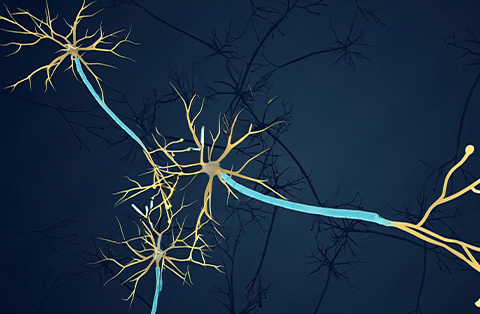What is Micrognathia?
Micrognathia is a condition characterized by a smaller than normal jaw. It often affects the lower jaw, known as the mandible, making it undersized compared to the rest of the face.
This condition can lead to difficulties with feeding, breathing, and speaking. It can occur as a standalone issue or as part of a syndrome involving other anomalies. Early diagnosis and intervention are crucial for managing its effects and improving quality of life.
What Causes Micrognathia?
Micrognathia arises from a mix of genetic and environmental factors. It can manifest due to genetic disorders like Pierre Robin sequence or Down syndrome. In some cases, it appears without a clear genetic link, possibly influenced by environmental factors in the womb. Understanding the exact cause often requires a detailed medical evaluation, including genetic testing and prenatal history analysis.
Causes of Micrognathia
Genetic syndromes:
Pierre Robin sequence
Down syndrome
Treacher Collins syndrome
Progeria
Chromosomal abnormalities:
Trisomy 13
Trisomy 18
Environmental factors during pregnancy:
Nutritional deficiencies
Exposure to harmful substances
Medication use
Intrauterine growth restrictions
Familial inheritance patterns
Genetic Causes and the Link to Micrognathia
Genetic causes play a crucial role in the development of micrognathia. This condition is often linked to genetic syndromes like Pierre Robin sequence, Down syndrome, and Treacher Collins syndrome.
Chromosomal abnormalities, such as trisomy 13 and trisomy 18, can also result in micrognathia. Family history and genetic inheritance patterns significantly influence the risk, highlighting the importance of genetic counseling and testing.
Symptoms of Micrognathia
Symptoms of micrognathia include a noticeably smaller lower jaw, which can lead to a receding chin appearance. This condition often results in difficulties with feeding, breathing, and speaking. In newborns, it might cause issues like tongue displacement. The condition can also affect dental alignment, leading to crowded or misaligned teeth as the child grows.
Micrognathia Symptoms:
Small lower jaw
Receding chin
Feeding difficulties
Breathing issues
Speech difficulties
Displacement of the tongue
Dental crowding
Misaligned teeth
Recognizing Micrognathia in Infants and Adults
Recognizing micrognathia involves noting a smaller lower jaw in both infants and adults. In infants, it may present with feeding and breathing challenges, along with a receding chin. Adults might show similar jaw discrepancies, affecting facial symmetry and dental alignment. Both groups can experience difficulties with speech.
Early detection in infants is crucial for managing potential complications through growth and development phases.
Obstructive Sleep Apnea: A Serious Symptom Associated with Micrognathia
Obstructive sleep apnea is a serious symptom often associated with micrognathia. This condition causes breathing interruptions during sleep, leading to poor sleep quality and oxygen levels. The smaller jaw structure in micrognathia can narrow the airway, increasing the risk of apnea. Recognizing and treating sleep apnea is crucial, as it can significantly impact overall health and well-being.
The Impact of Congenital Conditions on Micrognathia Symptoms
Congenital conditions significantly impact micrognathia symptoms. Conditions like Pierre Robin sequence or Treacher Collins syndrome often come with micrognathia, exacerbating feeding, breathing, and speech challenges from birth. These underlying genetic factors can intensify the need for early intervention and tailored treatment plans.
How is Micrognathia Diagnosed?
Doctors diagnose micrognathia through physical exams and imaging tests. They visually assess the jaw size and facial structure. Ultrasound can help detect micrognathia before birth. After birth, X-rays and 3D imaging provide detailed views of the jaw's bone structure. Genetic testing may also identify syndromes associated with micrognathia. Early diagnosis supports effective management and treatment planning.
The Role of Prenatal Ultrasound in Spotting Micrognathia
Prenatal ultrasound plays a crucial role in spotting micrognathia early. During pregnancy, ultrasound can visualize the baby's jaw size and facial structure. This non-invasive method allows for the early detection of potential challenges. Identifying micrognathia before birth prepares parents and healthcare providers for immediate and appropriate postnatal care, optimizing the child's health outcomes right from the start.
Physical Examination and the Detection of Micrognathia
Physical examination is key in detecting micrognathia. Healthcare providers assess the jaw's size and facial symmetry during routine check-ups. They observe the chin's position and the relationship between the upper and lower jaws. This hands-on approach aids in identifying micrognathia early, guiding further diagnostic testing and treatment planning. It ensures timely intervention, crucial for managing the condition's effects.
Diagnosing Related Conditions: Pierre Robin Syndrome and Cleft Lip and Palate
Diagnosing related conditions like Pierre Robin Syndrome and cleft lip and palate involves careful examination and imaging. Doctors look for key features, such as a small lower jaw, a displaced tongue, and gaps in the lip or palate. These conditions often occur together, requiring a holistic approach to diagnosis and treatment. Early identification allows for targeted interventions, improving outcomes for affected individuals.
Exploring Treatment Options for Micrognathia
Exploring treatment options for micrognathia involves a tailored approach based on severity and associated conditions. Options range from orthodontic interventions to improve dental alignment to surgical procedures for jaw advancement. In infants, special feeding techniques may help. For breathing difficulties, continuous positive airway pressure (CPAP) devices or surgery can offer relief. Early and individualized treatment plans optimize outcomes and quality of life.
When Surgery is a Viable Option: Mandibular Distraction Osteogenesis and Other Procedures
When surgery is a viable option, mandibular distraction osteogenesis stands out. This procedure gradually lengthens the jawbone, improving facial symmetry and function. Surgeons make precise cuts in the bone, then slowly separate them, allowing new bone to fill the gap. Other procedures might include jaw realignment or corrective orthodontic work. These surgical options aim to address both aesthetic concerns and functional impairments associated with micrognathia.
Surgical treatment options for micrognathia include:
Mandibular Distraction Osteogenesis: Gradually lengthens the lower jaw by creating a controlled fracture and slowly moving the bone segments apart to allow new bone to fill in the gap.
Jaw Advancement Surgery (Orthognathic Surgery): Involves repositioning the jaw to improve its alignment and functionality.
Genioplasty: A type of surgery that reshapes the chin to improve facial appearance and balance.
Tracheostomy: In severe cases, particularly in infants with breathing difficulties, to secure an airway.
Cleft Lip and Palate Repair: For cases where micrognathia is part of a syndrome involving clefts.
Bone Grafting: Adds bone to the jaw area to support growth and alignment in severe cases.
These options depend on the individual's age, the severity of the condition, and associated symptoms or syndromes. A multi-disciplinary team usually evaluates the best course of action.
Nonsurgical Treatments: Special Nipples and Positioning for Infants
Nonsurgical treatments for infants with micrognathia include using special nipples and positioning techniques. Special nipples help facilitate feeding by accommodating the infant's smaller jaw and potential difficulties with suction and swallowing.
Positioning the infant properly during feeding can also reduce the risk of aspiration and improve intake. These approaches support the infant's immediate needs, promoting growth and development while considering long-term treatment options.
Addressing Associated Conditions: Treating Cleft Lip, Palate, and Obstructive Sleep Apnea
Addressing associated conditions involves treating cleft lip, palate, and obstructive sleep apnea alongside micrognathia. Surgery often corrects cleft lip and palate, enhancing feeding, speech, and appearance. For obstructive sleep apnea, treatments may include CPAP devices or surgery to open the airway. Managing these conditions together ensures a comprehensive approach, improving overall health and quality of life for individuals with micrognathia.
The Connection Between Pierre Robin Sequence and Micrognathia
The connection between Pierre Robin Sequence and micrognathia is significant. This sequence begins with micrognathia, leading to a displaced tongue and potential airway obstruction. The small jaw size is a primary feature, setting the stage for associated challenges, including breathing and feeding difficulties. Addressing micrognathia in Pierre Robin Sequence is crucial for managing these related health concerns effectively.
What is Pierre Robin Syndrome in Babies?
Pierre Robin Syndrome is a condition marked by a sequence of developmental anomalies. It starts with a smaller lower jaw (micrognathia), leading to a tongue that falls back in the throat (glossoptosis) and difficulties with breathing and feeding. Many babies with this syndrome also have a cleft palate. Early treatment focuses on ensuring the baby can breathe and feed properly.
Management Strategies for Children with Pierre Robin Sequence and Micrognathia
Management strategies for children with Pierre Robin Sequence and micrognathia focus on ensuring safe breathing and feeding. These include positioning techniques to keep the airway open, using special feeding devices, and, in severe cases, surgical interventions like mandibular distraction osteogenesis. Early and ongoing speech therapy and orthodontic assessments also support development. A multidisciplinary team approach ensures comprehensive care tailored to each child's needs.
The Importance of a Multidisciplinary Approach in Treating Pierre Robin Sequence
This strategy involves pediatricians, surgeons, orthodontists, speech therapists, and nutritionists working together. They tackle breathing, feeding, speech, and dental challenges in a coordinated manner. This collaborative effort ensures holistic care, optimizing growth, development, and quality of life for affected children.
Frequently Asked Questions
What syndromes are associated with micrognathia?
Several syndromes are associated with micrognathia, including Pierre Robin Sequence, Treacher Collins Syndrome, Down Syndrome, and Turner Syndrome. Each of these conditions can feature micrognathia as a symptom, impacting jaw development and leading to further health considerations that require specialized attention and care.
What is a small jaw birth defect?
A small jaw birth defect, known as micrognathia, is a condition where a baby's lower jaw is significantly smaller than normal. This can lead to feeding, breathing, and speech difficulties. It often appears alone or as part of various syndromes.
Can micrognathia be corrected?
Yes, micrognathia can be corrected. Treatment options vary from nonsurgical methods like special feeding techniques to surgical interventions such as mandibular distraction osteogenesis. The approach depends on the severity and associated conditions. Early diagnosis and treatment help improve outcomes significantly.
Can micrognathia correct itself?
In some mild cases, micrognathia can improve as a child grows, especially during the rapid growth phases of early childhood. However, significant cases often require medical intervention to correct. Regular monitoring by healthcare professionals helps determine if and when treatment is necessary.






